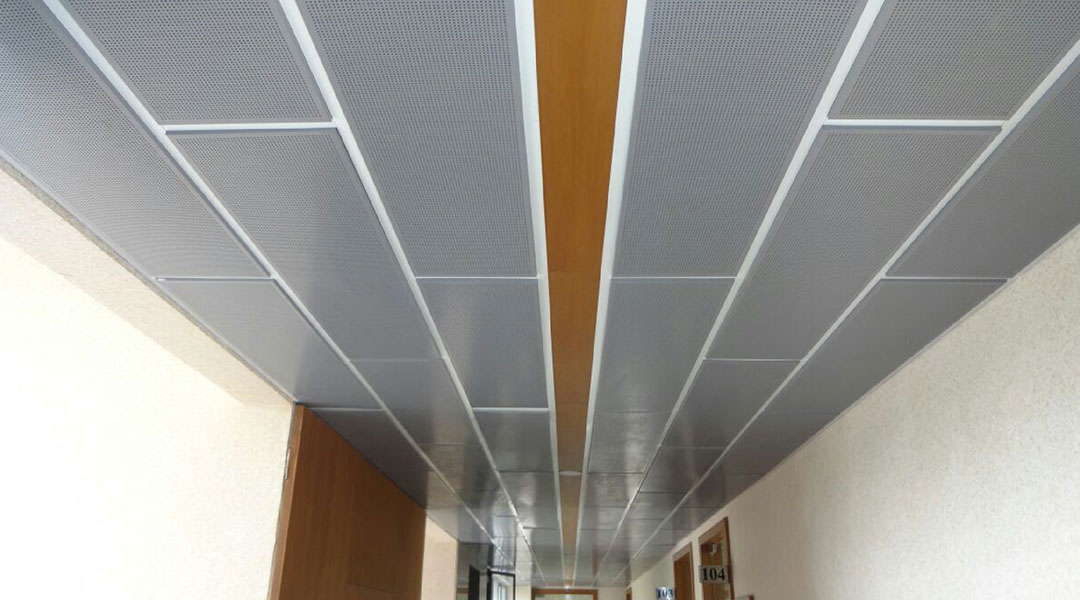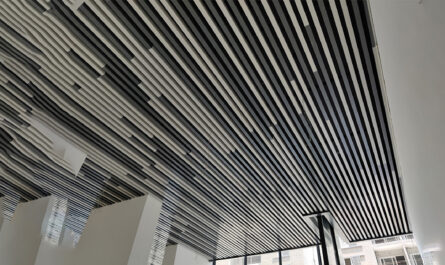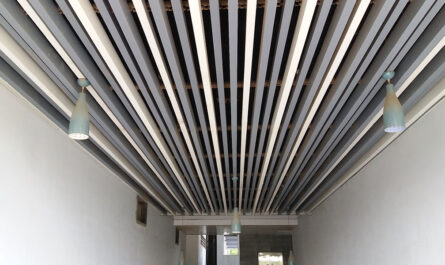When it comes to home improvement, ceilings are often an overlooked aspect of interior design, yet they can significantly influence the aesthetic and functionality of a space. Homeowners are increasingly considering various materials for their ceilings, notably aluminum, steel, and tin. Each of these materials possesses unique characteristics that can affect installation, durability, aesthetics, and maintenance. This article aims to provide a comparative analysis of aluminum, steel, and tin ceilings, exploring their benefits, drawbacks, and suitability for different home environments.
Overview of Ceiling Materials
Definition and Characteristics of Aluminum Ceilings
Aluminum ceilings are composed of lightweight metal, known for their resistance to moisture and corrosion. They can be manufactured into numerous designs, from sleek, modern looks to ornate patterns that evoke a sense of elegance. One of aluminum’s prime characteristics is its ability to be easily molded and finished, allowing homeowners to select a variety of textures and colors to match their decor.
Furthermore, aluminum ceilings are known for their capacity to reflect light, potentially making a room appear brighter and more spacious. This feature is particularly advantageous in smaller areas or spaces lacking natural light. The lightweight nature of aluminum also simplifies the installation process, making it a favored choice among DIY enthusiasts.
Definition and Characteristics of Steel Ceilings
Steel ceilings offer a different set of characteristics, primarily known for their strength and durability. Made from high-quality steel, these ceilings are capable of withstanding significant wear and tear, making them suitable for high-traffic areas. Steel ceilings can be treated with protective coatings to enhance resistance to rust and corrosion, although they generally require regular maintenance.
In terms of aesthetics, steel ceilings can provide a modern, industrial look, appealing to specific design preferences. They can also feature intricate designs, similar to those found in tin ceilings. However, their weight can pose challenges during installation, requiring additional support structures to ensure safety and stability.
Definition and Characteristics of Tin Ceilings
Tin ceilings, often associated with historical architecture, are crafted from thin sheets of metal, typically coated with a protective finish to prevent rust. These ceilings are renowned for their elaborate, decorative patterns, which can add a touch of vintage charm to any space. Often found in older homes, tin ceilings have experienced a resurgence in popularity, as homeowners seek to capture a nostalgic aesthetic.
Beyond their aesthetic appeal, tin ceilings can also provide sound dampening properties, helping to reduce noise in a room. However, like steel, they require careful installation and maintenance to prevent deterioration over time.
Benefits of Aluminum Ceilings
Lightweight and Easy to Install
One of the most significant advantages of aluminum ceilings is their lightweight nature, making them relatively easy to handle and install. This feature is particularly beneficial for homeowners looking to undertake renovations independently or those who want to minimize labor costs. The ease of installation can save both time and money, allowing for quicker project completion.
Additionally, aluminum can be cut and shaped with standard tools, providing flexibility during the installation process. Homeowners can adapt their ceiling design to unique room layouts without the need for specialized equipment, further enhancing the appeal of aluminum ceilings.
Durability and Resistance to Corrosion
Aluminum’s natural resistance to corrosion and moisture makes it an excellent choice for areas prone to humidity, such as kitchens and bathrooms. Unlike other materials that may warp, crack, or degrade over time, aluminum ceilings maintain their integrity even in challenging environments. This durability translates into long-term savings as homeowners spend less on repairs and replacements.
Moreover, the longevity of aluminum ceilings means they can withstand the test of time, maintaining their aesthetic appeal for years. This quality makes aluminum a reliable investment for homeowners looking to improve their interiors without frequent updates.
Drawbacks of Aluminum Ceilings
Cost Considerations
While aluminum ceilings offer numerous benefits, they can also come with a higher price tag compared to other materials. The cost of aluminum varies based on design complexity, thickness, and finish. Homeowners on a tight budget may find that the initial investment for aluminum ceilings is not feasible, especially when considering other ceiling options that may be more economical upfront.
In addition to material costs, installation expenses can also add to the overall price. While the ease of installation can mitigate some labor costs, the need for specialized tools or professional assistance can quickly escalate expenses. Homeowners should carefully evaluate their budgets before committing to aluminum ceilings.
Potential for Dents and Scratches
Another consideration is that aluminum, while durable, can be susceptible to dents and scratches. Impact from heavy objects or rough handling during installation can leave marks that may be challenging to repair. For families with young children or pets, this vulnerability could lead to increased maintenance and repairs over time.
While some minor scratches can be fixed with touch-up paint, deeper dents may necessitate panel replacement, leading to additional costs. Homeowners should weigh the risks of potential damage against the aesthetic benefits when deciding on aluminum ceilings.
Benefits of Steel Ceilings
Strength and Longevity
Steel ceilings are renowned for their exceptional strength and longevity, making them suitable for a variety of applications. Their robustness ensures that they can withstand the weight of insulation, fixtures, and any additional elements that may be hung from them. This strength makes them ideal for commercial spaces, industrial applications, or homes with high ceilings.
Moreover, the longevity of steel ceilings means that they can endure the rigors of daily life, remaining functional and attractive for decades. This characteristic can provide peace of mind to homeowners, knowing that they have invested in a durable ceiling solution.</p>
Fire Resistance
Another notable benefit of steel ceilings is their fire-resistant properties. Steel is non-combustible, meaning it does not ignite or contribute to the spread of flames in the event of a fire. This safety feature makes steel ceilings an excellent choice for those concerned about fire hazards in their homes.
Homeowners may also benefit from potential insurance discounts when opting for fire-resistant materials like steel. By choosing a steel ceiling, they not only enhance the safety of their home but may also enjoy financial benefits in the long run.
Drawbacks of Steel Ceilings
Weight and Installation Challenges
Despite their many advantages, steel ceilings come with drawbacks, particularly their weight. The heavier nature of steel can complicate the installation process, requiring additional support structures for safety and stability. Homeowners may need to hire professional installers, leading to increased labor costs.
Furthermore, the installation of steel ceilings can be time-consuming, as handling and securing the panels can pose challenges. It’s essential for homeowners to be aware of these factors to avoid surprises during the renovation process.
Susceptibility to Rust
While modern steel ceilings can be treated for corrosion resistance, they are still susceptible to rust if not properly maintained. Moisture exposure without adequate protection can lead to deterioration over time, posing long-term structural concerns. Homeowners should regularly inspect their steel ceilings for any signs of rust and address issues promptly to prevent further damage.
This maintenance requirement can be a downside for those seeking a low-maintenance ceiling option. Homeowners should weigh their willingness to commit to regular upkeep against the benefits of steel ceilings when making their decision.
Benefits of Tin Ceilings
Classic Aesthetic Appeal
Tin ceilings offer a unique and classic aesthetic that can transform the ambiance of any room. Their intricate designs and patterns evoke a sense of history and craftsmanship, making them a popular choice for those looking to create a vintage or rustic vibe. Homeowners can choose from a diverse range of styles, from traditional to contemporary, allowing for personalized decor.
The visual appeal of tin ceilings can elevate the overall design of a home, making them a focal point within a room. This characteristic can be particularly advantageous in spaces such as dining rooms, entryways, or kitchens, where ambiance plays a significant role in the overall experience.
Ease of Maintenance
Another benefit of tin ceilings is their relative ease of maintenance. Unlike porous materials that may absorb stains or odors, tin ceilings can be wiped clean with minimal effort. A simple solution of soap and water is often sufficient to keep them looking fresh and vibrant.
This low-maintenance quality is appealing for busy homeowners who want to enjoy the beauty of their ceilings without the hassle of extensive upkeep. Regular cleaning can help preserve the finish and prevent rust, ensuring the longevity of tin ceilings.
Drawbacks of Tin Ceilings
Potential for Rusting
While tin ceilings are designed to resist corrosion, they are not entirely immune to rust. If the protective coating is scratched or damaged, moisture can penetrate and lead to rust formation. Homeowners in humid climates or those using tin ceilings in areas prone to water exposure should be particularly vigilant about maintenance.
To mitigate the risk of rust, homeowners should ensure that their tin ceilings are properly sealed and inspect them regularly for any signs of wear. Addressing minor issues promptly can prevent more significant problems down the line.
Cost Factors
The cost of tin ceilings can also be a consideration for homeowners. While they can provide a stunning aesthetic, they often come with a higher price point compared to some other ceiling materials. The cost can vary based on design complexity and installation requirements, leading to a significant investment for homeowners.
Additionally, if professional installation is required, labor costs can add to the overall expense. Homeowners should evaluate their budget and explore various design options to find a solution that fits their financial constraints.
Comparative Analysis of Aluminum, Steel, and Tin Ceilings
Cost Comparison
When comparing the costs of aluminum, steel, and tin ceilings, several factors come into play, including material expenses, installation fees, and long-term maintenance costs. Aluminum ceilings generally have a mid-range price point, while steel ceilings can be more affordable for those looking for durability without the ornate designs of tin. Tin ceilings, on the other hand, tend to fall on the higher end of the spectrum, especially when considering elaborate designs and professional installation.
Homeowners must consider not only the upfront costs but also the potential longevity and maintenance expenses associated with each material. A more expensive ceiling option may offer greater durability, ultimately resulting in lower costs over time.
Durability Comparison
In terms of durability, steel ceilings generally lead the pack, thanks to their robust nature and resistance to wear. Aluminum also boasts considerable durability, particularly against moisture and corrosion, while tin ceilings, although visually appealing, require careful maintenance to prevent rust.
Choosing a ceiling material based on the anticipated wear and tear of the space is crucial. Steel is ideal for high-traffic areas, while aluminum can be suitable for rooms with variable humidity. Tin may be best reserved for decorative spaces where aesthetics take precedence over extreme durability.
Aesthetic Appeal Comparison
Aesthetically, tin ceilings stand out due to their intricate designs and historical associations, offering a unique charm that can elevate any room. Aluminum ceilings offer versatility, allowing for a range of finishes and designs that can suit modern tastes. Steel ceilings provide a more industrial look, appealing to those who favor contemporary decor.
Ultimately, the choice of material will depend on individual design preferences. Homeowners should consider how each material aligns with their overall aesthetic goals when making a decision.
Installation Complexity Comparison
Installation complexity varies significantly between the three materials. Aluminum ceilings are typically the easiest to install due to their lightweight nature, making them a favorite among DIY enthusiasts. Steel ceilings may require more effort due to their weight, and professional installation is often recommended. Tin ceilings, while manageable, demand precision in installation to ensure that the decorative patterns align correctly.
Homeowners should weigh their comfort level with DIY projects against the potential need for professional assistance. Understanding the installation requirements of each material can aid in making an informed choice.
Conclusion
In conclusion, aluminum, steel, and tin ceilings each offer distinct advantages and disadvantages that can significantly impact a homeowner’s decision. Aluminum ceilings are lightweight, corrosion-resistant, and easy to install, yet may come at a higher cost and risk of scratches. Steel ceilings provide unmatched strength and fire resistance, but their weight and susceptibility to rust require careful consideration. Tin ceilings bring a classic aesthetic appeal and ease of maintenance, although they can be prone to rust and come with a significant price tag.
Ultimately, the choice between aluminum, steel, and tin ceilings will depend on individual needs, preferences, and budgets. Homeowners are encouraged to evaluate each option carefully, considering factors such as installation, maintenance, and design aesthetics to find the perfect ceiling solution for their homes.
FAQs
- Which ceiling material is the most affordable?
Steel ceilings tend to be more affordable than aluminum or tin ceilings, making them an accessible option for budget-conscious homeowners. - How can I maintain my tin ceiling to prevent rust?
Regular cleaning with soap and water, and promptly addressing any scratches in the protective coating, can help prevent rust on tin ceilings. - Are aluminum ceilings suitable for bathrooms?
Yes, aluminum ceilings are highly resistant to moisture and corrosion, making them a suitable choice for bathrooms and kitchens. - Can I install these ceilings myself?
Aluminum ceilings are typically the easiest to install yourself. Steel may require professional assistance due to its weight, while tin installations demand careful alignment and precision. - What design options are available for each ceiling material?
Aluminum ceilings offer various finishes and textures, steel can have modern or industrial designs, and tin ceilings can feature intricate, historical patterns.




